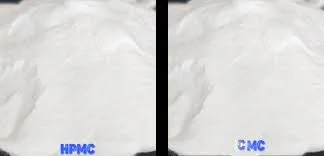
Dic . 24, 2024 20:09 Back to list
Synthesis Techniques and Applications of Hydroxyethyl Cellulose in Modern Industries
Synthesis of Hydroxyethyl Cellulose An Overview
Hydroxyethyl cellulose (HEC) is a non-ionic, water-soluble polymer derived from cellulose. It has gained significant attention in various industries due to its exceptional properties such as thickening, binding, and film-forming capabilities. This article explores the synthesis of hydroxyethyl cellulose, examining the process, its applications, and the factors influencing its production.
The Synthesis Process
The synthesis of hydroxyethyl cellulose involves the etherification of cellulose with ethylene oxide in an alkaline medium. The raw material, cellulose, can be derived from various natural sources, including cotton, wood pulp, and other plant materials. The primary steps in the synthesis process are as follows
1. Preparation of Cellulose The cellulose source is first purified to remove any impurities and non-cellulosic substances. This can involve processes such as bleaching and filtration.
2. Alkalization The purified cellulose is then treated with an alkaline solution, typically sodium hydroxide (NaOH). This step is crucial as it swells the cellulose, making it more reactive and facilitating the subsequent etherification reaction.
3. Etherification Following the alkalization, ethylene oxide is introduced to the alkaline cellulose. This reaction occurs under controlled temperature and pressure to ensure high yield and quality of the product. During this process, the ethylene oxide molecules react with the hydroxyl groups present in the cellulose, substituting them with hydroxyethyl groups. The degree of substitution, which measures the number of hydroxyethyl groups introduced, plays a critical role in determining the properties of the final product.
4. Purification After etherification, the product is purified to remove any unreacted ethylene oxide and alkali. This can be accomplished through various methods such as precipitation, filtration, and washing with water or organic solvents.
5. Drying and Milling The purified hydroxyethyl cellulose is then dried and ground into a fine powder, making it suitable for various applications.
Factors Influencing Synthesis
hydroxyethyl cellulose synthesis

Several factors influence the synthesis of hydroxyethyl cellulose, including the concentration of reactants, reaction temperature, and time. The degree of substitution and the molecular weight of the polymer are critical attributes that can be tailored during synthesis
- Concentration of Reactants The ratio of cellulose to ethylene oxide can significantly impact the degree of substitution. A higher concentration of ethylene oxide generally leads to a higher degree of substitution, which can enhance the solubility and thickening properties of the polymer.
- Temperature and Time The reaction temperature can affect the reaction kinetics and product yield. Higher temperatures may accelerate the reaction, but they may also lead to undesirable side reactions. Similarly, the duration of the reaction should be optimized to achieve the desired properties without compromising product quality.
- Purity of Raw Materials The purity of the cellulose used as a starting material is paramount. Impurities can lead to inconsistencies in the product's characteristics, potentially affecting its performance in applications.
Applications of Hydroxyethyl Cellulose
Hydroxyethyl cellulose is widely used across various sectors due to its versatile properties. In the construction industry, it serves as a thickening agent in cement-based materials, improving workability and water retention. In pharmaceuticals, it acts as a binder and film-forming agent in tablets and coatings. The cosmetic industry also utilizes HEC as a thickener and emulsifier in creams and lotions, enhancing texture and stability.
Moreover, its role in the food industry as a stabilizer and thickening agent showcases its versatility. Hydroxyethyl cellulose is also explored in the production of biodegradable films and as a component in various environmentally-friendly formulations.
Conclusion
The synthesis of hydroxyethyl cellulose is a multifaceted process that plays a vital role in producing this versatile polymer. Through careful control of reaction conditions and understanding the underlying chemical processes, manufacturers can tailor HEC to meet specific needs across various industries. As demand for sustainable and effective materials continues to grow, hydroxyethyl cellulose stands out as a crucial compound, showcasing the importance of innovative synthesis techniques in modern applications.
-
Unlocking the Benefits of HPMC Products: A Gateway to Versatile Applications
NewsAug.07,2025
-
Unleashing the Potential of HPMC Ashland: A Comprehensive Look
NewsAug.07,2025
-
Tile Bonding Cellulose: The Key to Superior Adhesion and Durability
NewsAug.07,2025
-
Hydroxypropyl Methylcellulose Powder: The Versatile Component in Modern Pharmaceuticals
NewsAug.07,2025
-
Hydroxyethyl Cellulose: The Versatile Solution for Various Industries
NewsAug.07,2025
-
Hydroxyethyl Cellulose (HEC): The Versatile Polymer for Various Applications
NewsAug.07,2025







